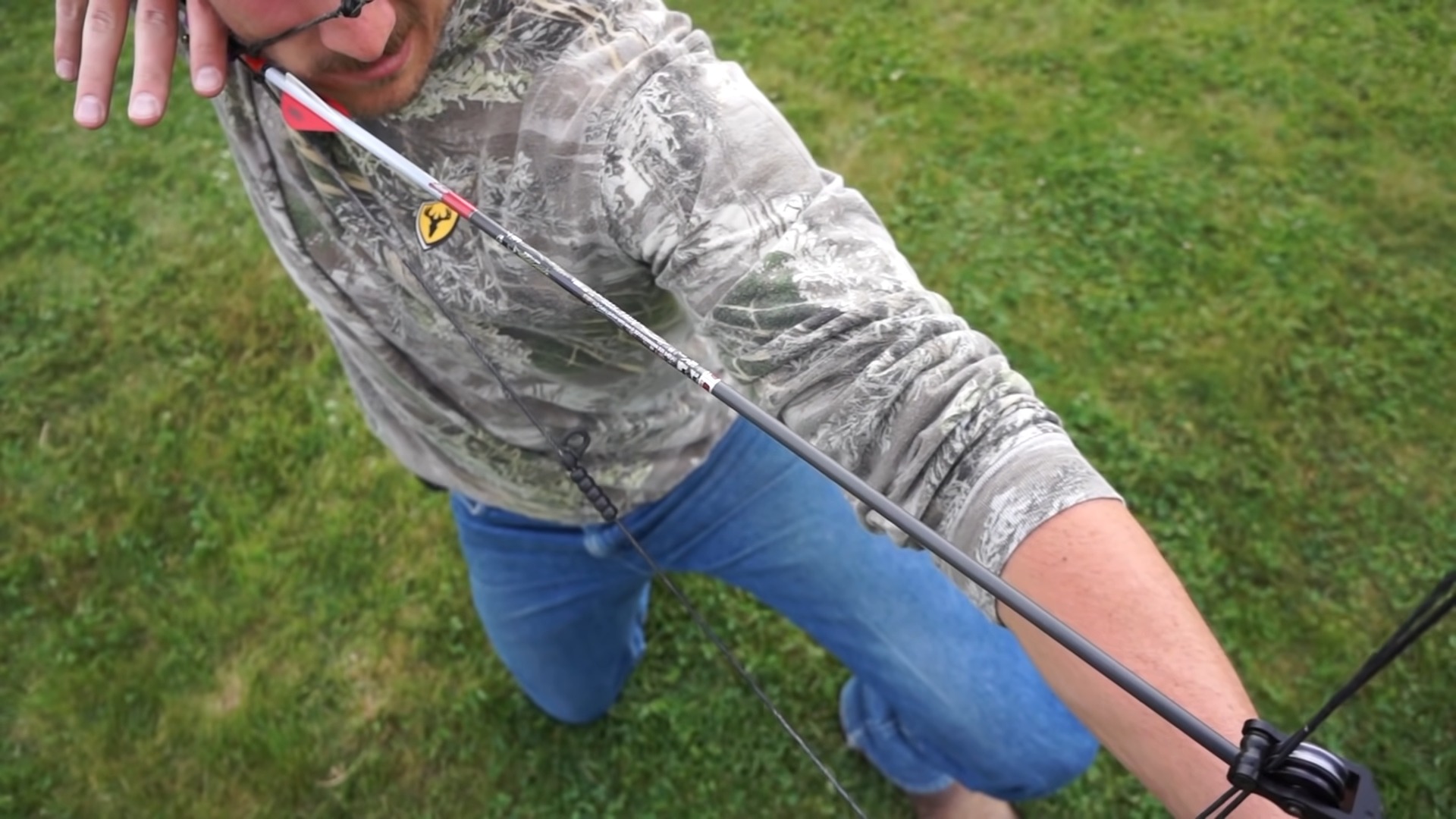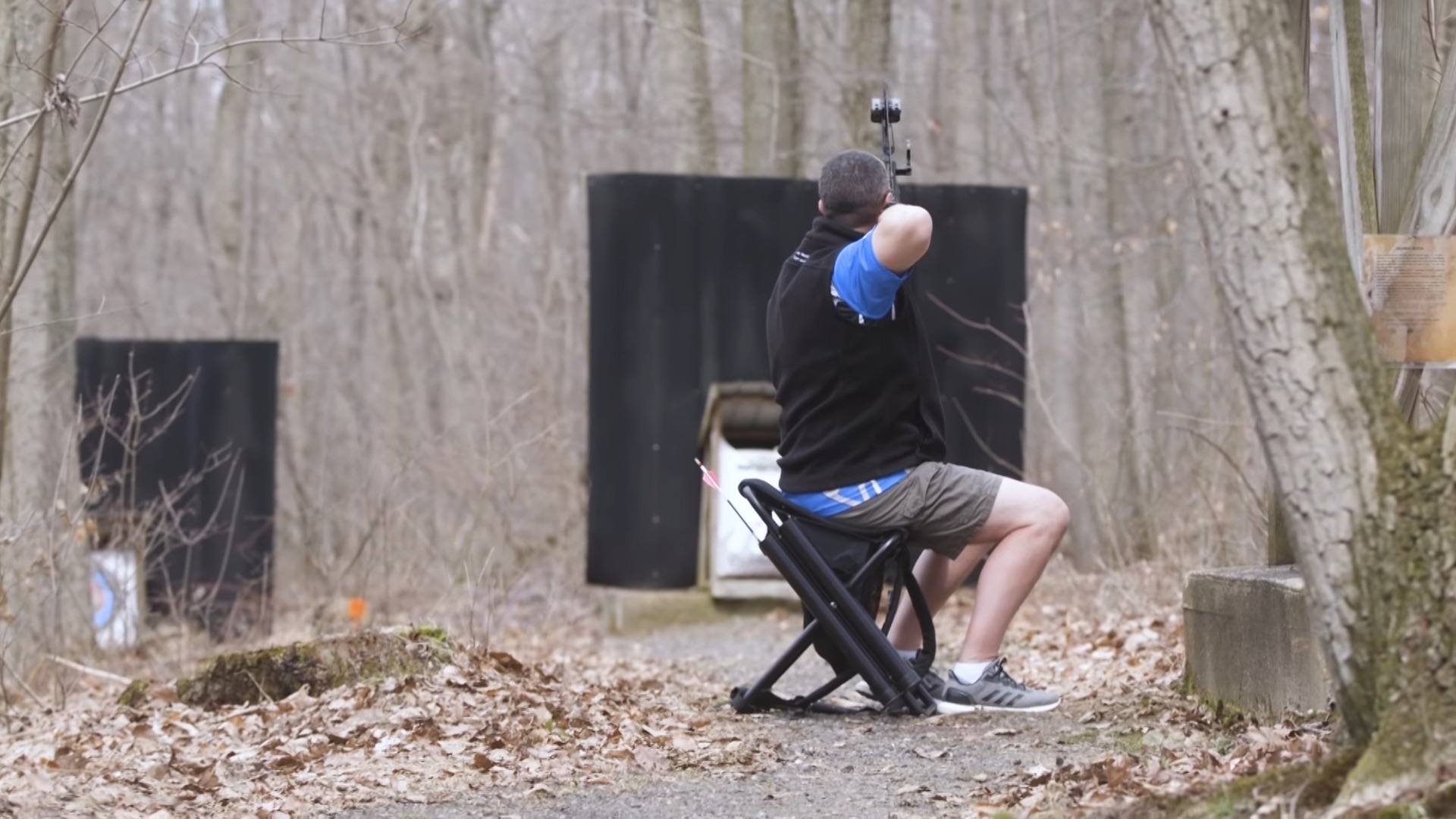I’ve spent over a decade teaching people just like you how to shoot a bow and arrow. Archery is more than just a hobby for me—it’s a way to build focus, discipline and a sense of calm.
You don’t have to be Robin Hood to get started; all you need is the desire to learn. This guide is your one-stop shop for all things archery. I’ll break down all the need-to-know info, from the different types of bows to the best ways to stand, aim, and let that arrow fly. By the end, you’ll have a solid foundation to start your own journey in this amazing sport.
The Basics
Before you start shooting arrows, it’s crucial to understand the fundamentals, which include knowing the different types of bows and essential gear. This knowledge forms the bedrock upon which your archery skills will be built.
Types of Bows
The first step to becoming proficient in archery is to understand the types of bows you can use. Here are the most common types:
- Recurve Bow: Widely used in target archery and the only bow allowed in Olympic competitions.
- Compound Bow: Uses a levering system, making it easier to hold at full draw. Ideal for hunting.
- Longbow: The traditional wooden bow, simpler in design and without recurve.
- Crossbow: Resembles a rifle, easier to shoot but generally not used in traditional archery.
It’s essential to choose a bow that fits your purpose, whether that’s target shooting, hunting, or traditional archery. The right bow will make a significant difference in how quickly you can learn and how effective you’ll be.
Selecting the right type of bow is crucial as it will influence your style of shooting. For beginners, a recurve bow is often recommended due to its simple design and versatility.
Essential Gear
Apart from your bow, you’ll need some other essential items:
- Arrows: Match these with your bow type; different arrows are more suitable for different kinds of shooting.
- Quiver: To hold your arrows.
- Arm Guard: Protects your forearm from the bowstring.
- Finger Tab: Protects your fingers while drawing the string.
| Gear | Purpose | Recommended For |
| Arrows | Projectiles to be shot | All archers |
| Quiver | Carrying arrows | All archers |
| Arm Guard | Protection from bowstring | Beginners to Intermediate |
| Finger Tab | Protecting fingers during draw | Beginners to Intermediate |
Having the right gear will ensure not only a smoother learning experience but also better performance and safety.
The Fundamentals of Archery

Armed with the right gear, it’s time to focus on the core fundamentals. Archery is all about precision and technique, so honing the basics is crucial.
Stance
A strong stance is the foundation of your archery practice. Your feet should be shoulder-width apart to provide a stable base. Make sure your weight is evenly distributed on both legs.
The orientation of your feet is equally important. They should be parallel to the shooting line, and your body should be perpendicular to your target. A strong, balanced stance sets the tone for the rest of your shot.
Grip
Your grip on the bow is the next fundamental to focus on. Hold the bow handle with a relaxed but firm grip. It’s crucial not to hold too tightly, as this can introduce tension and throw off your aim.
The bow should rest on the meaty part of your thumb, allowing for a natural angle when held. Your knuckles should present a 45-degree angle to the bow, allowing for optimum flexibility and control.
Drawing and Aiming
Drawing and aiming are two interrelated skills that require practice and precision. When drawing the bow, use your back muscles rather than your arm strength. This provides a more stable draw and allows for better aim.
For aiming, the key is consistency. Your anchor point—the place where you pull the string back to—should be the same every time. Whether it’s the corner of your mouth or your cheek, consistency is crucial for accuracy.
Shooting Techniques

After mastering the fundamentals, you’ll want to explore different shooting techniques. Each approach has its merits and drawbacks, depending on your goals and the type of archery you’re interested in.
Instinctive Shooting
Instinctive shooting is often associated with traditional archery and doesn’t rely on sights. The focus here is on developing an intuitive sense of aim through extensive practice. Training for instinctive shooting involves aligning the bow and the target in your vision and letting your subconscious do the work.
It’s like throwing a baseball; you don’t aim, you just ‘know’ where to throw. Because instinctive shooting relies so much on intuition, consistent practice is crucial. The technique is particularly useful for situations that require quick shooting, such as hunting or archery competitions.
Sighted Shooting
Sighted shooting, on the other hand, involves the use of sights to aim. This technique is more about precision and is commonly used in target archery. The sight allows you to align your bow precisely with the target, giving you a point of reference for your aim.
This makes sighted shooting easier to learn compared to instinctive shooting, but it also requires regular calibration of the sight to ensure accuracy. Both techniques have their merits and are suited for different types of archery. Beginners often start with sighted shooting and then move on to instinctive shooting as they gain more experience.
Common Mistakes and How to Avoid Them
Even seasoned archers can make mistakes. Being aware of common pitfalls and how to avoid them can drastically improve your performance.
- Inconsistent Stance: Ensure your stance is balanced and consistent every time.
- Gripping the Bow Too Tightly: A relaxed grip is crucial for accurate shooting.
- Rushing the Shot: Take your time to aim and release smoothly.
Advanced Tips for Seasoned Archers
If you’ve been practicing archery for a while, there are still areas to explore for improvement. Let’s go through some advanced tips that can help even seasoned archers take their skills to the next level.
- Fine-tuning Your Equipment: Small adjustments to your bow or arrows can make a significant difference.
- Mental Conditioning: Archery is as much a mental game as a physical one. Techniques like visualization can improve your focus and accuracy.
- Physical Fitness: Core strength, flexibility, and endurance can all contribute to better archery performance.
These advanced tips provide avenues for continual improvement, pushing the boundaries of what you can achieve with a bow and arrow.
FAQs
What is the ideal draw weight for a beginner?
For beginners, it’s generally best to start with a lower draw weight. A recurve bow with a draw weight of 20-30 pounds is usually a good starting point. This allows you to focus on mastering your form without straining your muscles.
Can I practice archery in my backyard?
This depends on the laws and regulations of your local jurisdiction. Some areas permit archery in private backyards as long as safety measures are in place, such as a backstop and adequate space between you and your neighbors. Always check your local laws and make sure to follow all safety guidelines.
How often should I replace my bowstrings?
The frequency of replacing bowstrings largely depends on how often you shoot and the type of material used in the string. However, a general guideline is to replace the strings every 2-3 years for casual shooters and annually for those who shoot regularly.
Can children learn archery? If so, at what age should they start?
Yes, children can definitely learn archery! Many clubs and training centers offer classes specifically designed for kids. The ideal starting age varies, but generally, children as young as 8 can start learning archery, depending on their maturity level and ability to follow safety instructions.
How do weather conditions affect archery?
Weather can have a significant impact on your shooting. Wind can alter an arrow’s course, and wet conditions can affect your grip and the bowstring’s tension.
Experienced archers often practice in varying weather conditions to understand how to adjust their techniques accordingly.
Are there any mental exercises that can help improve my archery skills?
Yes, mental preparation is crucial in archery. Visualization exercises, where you mentally rehearse each step of drawing, aiming, and releasing the arrow, can be very beneficial.
Some archers also find that mindfulness and meditation techniques help in improving focus and reducing performance anxiety.
Final Words
Archery is a timeless sport that combines skill, focus, and a touch of ancient wisdom. Whether you’re a beginner or have years of experience, there’s always something new to learn.
By understanding the basics, mastering the fundamentals, choosing your shooting technique, and continually refining your skills, you’ll be well on your way to becoming an archery expert.

My name is Stefan, and I have been teaching and practicing archery for over 15 years. I am a certified archery instructor and an expert in archery equipment and techniques.
I started shooting bow and arrows as a kid, but it wasn’t until I was in college that I discovered traditional archery. I fell in love with the simplicity and precision required for this timeless sport. After graduating, I became a certified archery instructor so I could share my passion with others.
Over the past decade and a half, I have helped countless people learn the art of archery. Whether they are seeking a new hobby or looking to improve their form, I enjoy helping people find success in this sport.
In addition to teaching, I also write archery equipment reviews and how-to articles for GearDisciple, sharing my expertise to help other archers find the best gear and techniques to fit their needs. For me, archery is more than just a hobby – it is a way to encourage focus, discipline, and mindfulness through the practice of this ancient art. I look forward to sharing my knowledge and experience with the readers of GearDisciple.